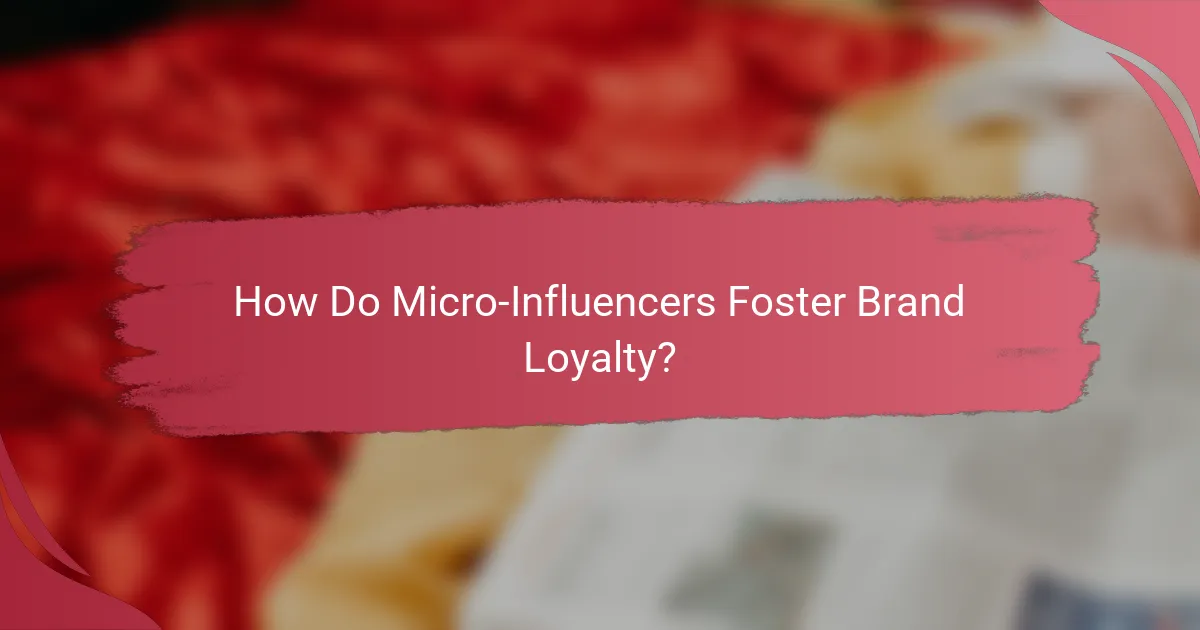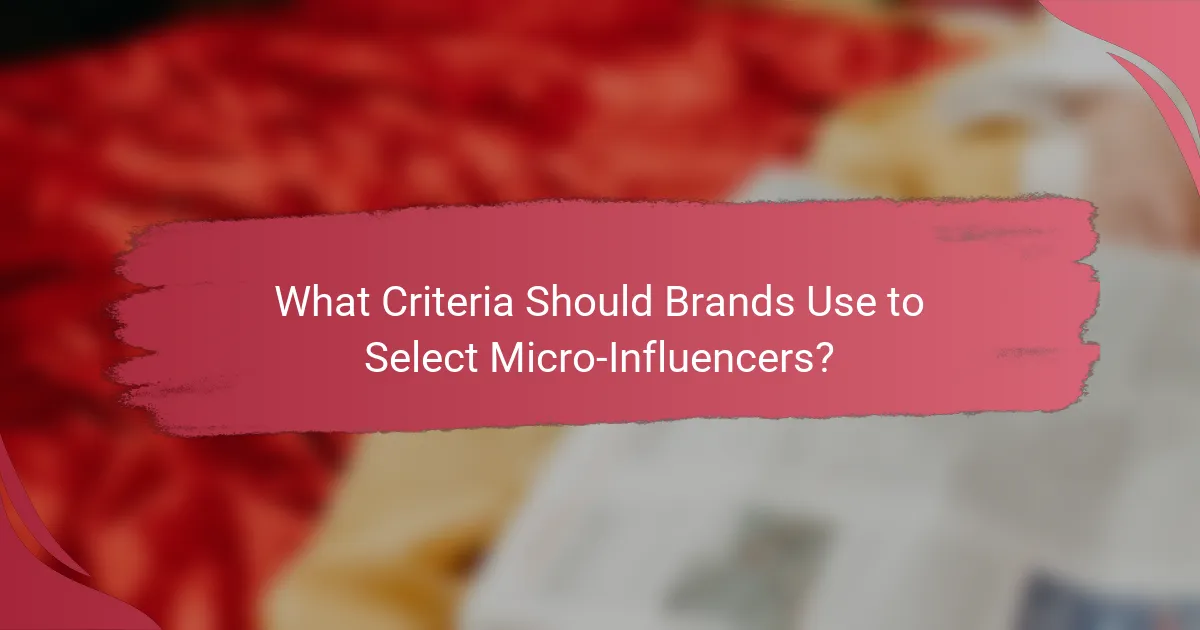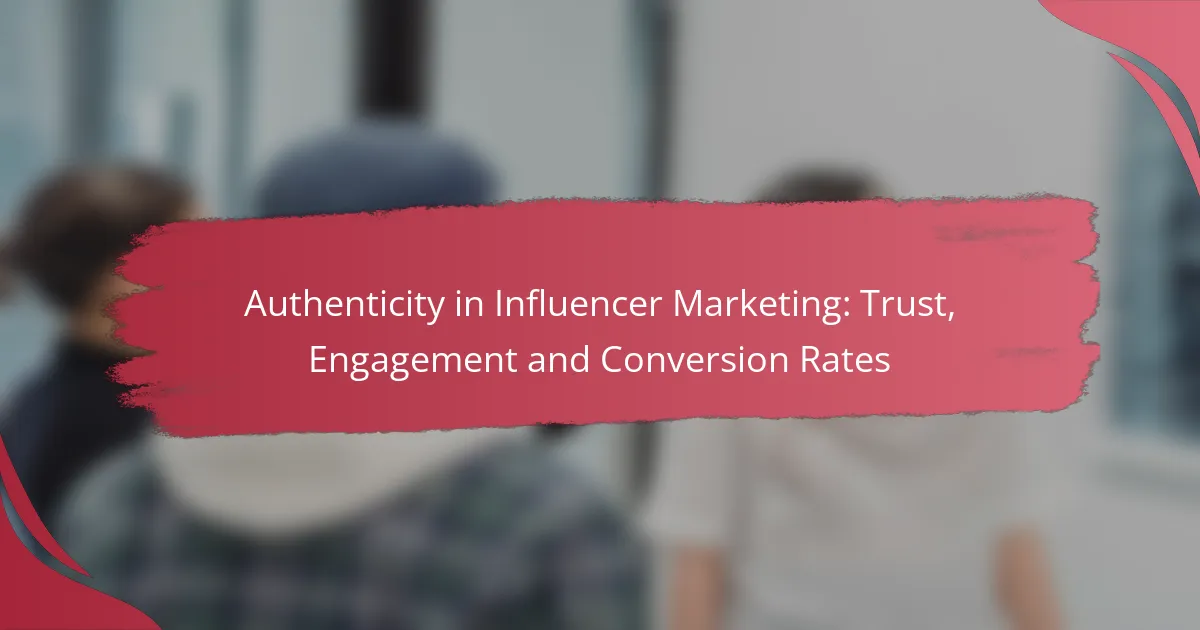Micro-influencers play a crucial role in modern marketing by driving engagement through authentic connections with their audiences. With their smaller, yet dedicated followings, they excel in niche targeting, allowing brands to connect with specific demographics that are more likely to engage and foster loyalty. This personalized approach not only enhances brand visibility but also cultivates trust and long-term relationships with customers.

How Do Micro-Influencers Drive Engagement?
Micro-influencers drive engagement by fostering genuine connections with their audiences, resulting in higher interaction rates and brand loyalty. Their smaller follower counts often translate to more targeted and meaningful interactions, making them effective for niche marketing strategies.
High interaction rates
Micro-influencers typically enjoy interaction rates that can be significantly higher than those of larger influencers, often exceeding 5% to 10%. This higher engagement is due to their more personal relationships with followers, who feel more connected and valued.
Brands can leverage these high interaction rates by collaborating with micro-influencers to create campaigns that encourage audience participation, such as contests or Q&A sessions. This approach not only boosts visibility but also fosters a sense of community among followers.
Authentic content creation
Micro-influencers excel at creating authentic content that resonates with their audience. Their posts often reflect real-life experiences and opinions, which helps build trust and credibility.
Brands should encourage micro-influencers to share their genuine thoughts on products or services, rather than scripted endorsements. This authenticity can lead to higher conversion rates, as followers are more likely to trust recommendations from someone they perceive as relatable.
Community building
Micro-influencers play a crucial role in community building by fostering discussions and interactions among their followers. They often create niche communities centered around specific interests, making them valuable for brands targeting particular demographics.
To maximize community engagement, brands can collaborate with micro-influencers to host events, webinars, or live streams that encourage audience participation. This not only strengthens the community but also enhances brand loyalty as followers feel more connected to both the influencer and the brand.

What Are the Benefits of Niche Targeting with Micro-Influencers?
Niche targeting with micro-influencers allows brands to connect with specific audiences who are more likely to engage with their products. This focused approach enhances brand loyalty and can lead to more meaningful interactions between the brand and its customers.
Access to specific audiences
Micro-influencers often cultivate dedicated followings within particular niches, such as fitness, beauty, or technology. By collaborating with these influencers, brands can reach audiences that are already interested in their products or services, ensuring that marketing efforts are directed toward potential customers who are more likely to convert.
For example, a skincare brand targeting eco-conscious consumers might partner with a micro-influencer known for promoting sustainable beauty practices. This targeted approach can lead to higher engagement rates and a more receptive audience.
Higher conversion rates
Brands that utilize micro-influencers typically experience higher conversion rates compared to traditional advertising methods. This is largely due to the trust and authenticity that micro-influencers build with their followers, leading to more effective recommendations.
Research suggests that micro-influencers can achieve conversion rates that are significantly higher than those of larger influencers, often ranging from 5% to 10%. This means that for every 100 followers, 5 to 10 might make a purchase based on the influencer’s recommendation.
Cost-effective marketing
Working with micro-influencers is often more budget-friendly than engaging with larger influencers or traditional advertising channels. Micro-influencers typically charge lower fees, making it feasible for brands with smaller marketing budgets to leverage their reach.
For instance, a brand might pay a micro-influencer a few hundred dollars for a sponsored post, while a macro-influencer could demand thousands. This cost-effectiveness allows brands to allocate resources to multiple micro-influencers, maximizing their outreach and impact.

How Do Micro-Influencers Foster Brand Loyalty?
Micro-influencers build brand loyalty by creating authentic connections with their audiences through niche targeting and personalized engagement. Their smaller, dedicated followings allow brands to foster deeper relationships and trust, which are essential for long-term customer loyalty.
Personalized brand experiences
Micro-influencers excel at crafting personalized brand experiences that resonate with their specific audience. By sharing tailored content and recommendations, they make followers feel valued and understood, which enhances emotional connections to the brand.
For instance, a beauty micro-influencer might create makeup tutorials using a specific brand’s products, showcasing how they fit into everyday life. This personal touch encourages followers to try the products, leading to increased brand loyalty.
Trust and credibility
Trust and credibility are crucial in fostering brand loyalty, and micro-influencers often enjoy higher levels of both compared to larger influencers. Their followers perceive them as relatable and authentic, making their endorsements more impactful.
When a micro-influencer shares their honest opinion about a product, their audience is more likely to trust that recommendation. This trust translates into higher engagement rates and a greater likelihood of followers becoming loyal customers.
Long-term partnerships
Establishing long-term partnerships with micro-influencers can significantly enhance brand loyalty. Consistent collaboration allows brands to maintain visibility and reinforce their message over time, creating a sense of familiarity and reliability.
Brands should consider nurturing these relationships by providing ongoing support and incentives. For example, exclusive access to new products or special promotions can keep micro-influencers engaged and motivated to advocate for the brand, ultimately strengthening customer loyalty.

What Criteria Should Brands Use to Select Micro-Influencers?
Brands should focus on engagement metrics, audience demographics, and content alignment when selecting micro-influencers. These criteria ensure that the influencer’s audience is not only relevant but also actively engaged with their content, maximizing the potential for brand loyalty and effective marketing.
Engagement metrics
Engagement metrics are crucial for assessing how actively an influencer’s audience interacts with their content. Look for indicators such as likes, comments, shares, and overall engagement rates, which typically range from 2% to 10% for micro-influencers. Higher engagement often signifies a more dedicated audience, making it more likely that your brand message will resonate.
Consider using tools to analyze these metrics over time, as consistent engagement can indicate a loyal following. Avoid influencers with artificially inflated metrics, as these can lead to ineffective campaigns.
Audience demographics
Understanding the audience demographics of potential micro-influencers is essential for effective targeting. Brands should assess factors such as age, gender, location, and interests to ensure alignment with their target market. For instance, an influencer with a predominantly young female audience may be ideal for a beauty brand targeting that demographic.
Utilizing analytics tools can help brands gain insights into the influencer’s audience composition. Ensure that the demographics align with your brand’s goals to maximize the impact of your marketing efforts.
Content alignment
Content alignment refers to how well an influencer’s content style and themes match your brand’s values and messaging. Brands should review the influencer’s previous posts to ensure they resonate with your target audience and reflect your brand image. For example, an eco-friendly product would benefit from partnering with influencers who prioritize sustainability in their content.
Establish clear guidelines and expectations for content creation to maintain brand integrity. Collaborating with influencers who genuinely connect with your brand can foster authenticity and enhance brand loyalty among their followers.

How Can Brands Measure the Success of Micro-Influencer Campaigns?
Brands can measure the success of micro-influencer campaigns through various metrics that indicate engagement, conversion, and overall brand perception. By focusing on specific data points, brands can assess the effectiveness of their collaborations and optimize future strategies.
Tracking engagement rates
Engagement rates are a critical metric for evaluating micro-influencer campaigns, as they reflect how well the audience interacts with the content. This can include likes, comments, shares, and saves across social media platforms. A good engagement rate typically ranges from 3% to 10%, depending on the platform and niche.
To track engagement, brands can use analytics tools provided by social media platforms or third-party services. Monitoring these rates over time helps identify which content resonates most with the target audience, allowing for adjustments in strategy.
Analyzing conversion metrics
Conversion metrics indicate how effectively a micro-influencer campaign drives desired actions, such as purchases or sign-ups. Brands should track unique discount codes, affiliate links, or specific landing pages to measure conversions accurately. A conversion rate of 1% to 5% is often considered successful in influencer marketing.
Using tracking tools like Google Analytics can help brands understand the customer journey and identify which influencers are generating the most conversions. This data is essential for optimizing future campaigns and allocating budgets effectively.
Monitoring brand sentiment
Brand sentiment analysis helps brands gauge public perception and emotional response to their campaigns. This can be done through social listening tools that analyze comments, reviews, and mentions across various platforms. Positive sentiment can lead to increased brand loyalty, while negative feedback may indicate areas for improvement.
Brands should regularly review sentiment data to understand how micro-influencer campaigns impact their overall image. Engaging with audiences who express both positive and negative sentiments can foster loyalty and enhance brand reputation.

What Tools Are Available for Managing Micro-Influencer Campaigns?
Several tools can help brands effectively manage micro-influencer campaigns, focusing on engagement, niche targeting, and brand loyalty. These platforms streamline the process of finding, collaborating with, and analyzing the performance of micro-influencers.
Influencity
Influencity is a comprehensive influencer marketing platform that provides tools for discovering and managing micro-influencers. It offers features like audience analysis, campaign tracking, and performance metrics, allowing brands to assess the effectiveness of their collaborations.
When using Influencity, brands can filter influencers by niche, engagement rates, and audience demographics. This targeted approach ensures that the selected influencers align closely with the brand’s values and goals.
Upfluence
Upfluence is designed to facilitate influencer discovery and campaign management, focusing on micro-influencers across various niches. The platform provides detailed analytics, enabling brands to track engagement and ROI effectively.
Brands can leverage Upfluence’s database to find influencers who resonate with their target audience. The platform also supports direct communication with influencers, simplifying the collaboration process.
Traackr
Traackr is an influencer relationship management tool that helps brands build and maintain relationships with micro-influencers. It emphasizes data-driven insights, allowing brands to measure the impact of their influencer campaigns accurately.
With Traackr, brands can create customized influencer lists based on specific criteria, such as engagement levels and audience interests. This targeted approach enhances the likelihood of successful partnerships and fosters long-term brand loyalty.



